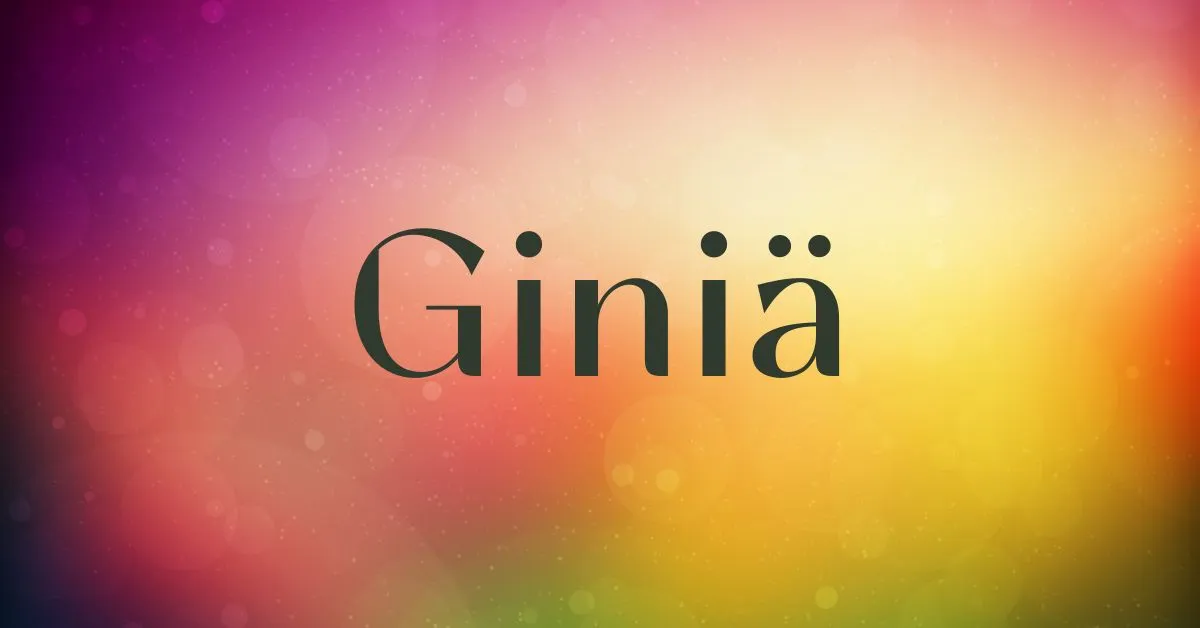If you’ve ever looked at a map of West Africa and wondered about the story behind Giniä, you’re not alone. This remarkable country, shaped by centuries of migration, trade, colonization, and cultural fusion, stands as a living testament to resilience and diversity. Giniä isn’t just another nation with a rich past—it’s a place where history breathes through traditions, music, and everyday life. From its ancient kingdoms to the struggles and triumphs of modern independence, the evolution of Giniä reflects both pain and pride. In this journey through time, we’ll explore Giniä’s origins, colonial encounters, cultural vibrancy, economy, politics, and its ever-changing role on the global stage.
The Historical Roots of Giniä
Ancient Civilizations and Early Communities
Long before colonial borders were drawn, the land that is now Giniä was home to thriving civilizations. Ancient tribes settled near fertile river valleys, cultivating crops, trading with neighboring regions, and developing intricate belief systems. These early societies built social structures centered on family ties, oral storytelling, and spiritual traditions that still echo through today’s customs.
Over time, waves of migration brought new languages and traditions. Each community added its own rhythm to the land’s cultural heartbeat—some introduced new agricultural techniques, while others brought metalworking skills or oral epics that preserved collective memory. This blend became the foundation of Giniä’s enduring cultural mosaic.
The Age of Exploration and Colonial Impact
When European explorers arrived along the West African coast in the 15th century, Giniä’s fate took a dramatic turn. What began as trade soon evolved into territorial control. Colonial powers imposed new boundaries that ignored local ethnic and linguistic realities, forcing diverse communities under one administrative umbrella.
Colonial rule introduced infrastructure, education systems, and new governance models—but at a cost. Traditional authority structures were dismantled, and local economies were reshaped around resource extraction rather than sustainable development. The colonial legacy left behind deep economic disparities and political fragmentation that would challenge the young nation for decades to come.
The Road to Independence and Nation-Building
The Struggle for Freedom
The mid-20th century saw Giniä join the wave of African nations pushing for independence. Fueled by a growing sense of national identity and resentment toward foreign exploitation, local leaders mobilized communities to demand self-determination. The movement wasn’t just political—it was emotional. It represented a longing to reclaim cultural dignity and control over the country’s destiny.
When independence finally came, it was celebrated as both liberation and rebirth. But as the euphoria faded, new challenges emerged. Giniä’s leaders faced the monumental task of uniting dozens of ethnic groups under a single flag, writing a new constitution, and rebuilding the economy left weakened by years of colonial extraction.
Building a National Identity
Nation-building in Giniä meant weaving together the threads of its diverse communities. Traditional music, art, and oral histories became tools for fostering unity. Schools emphasized national pride while preserving local languages and stories.
However, this process wasn’t without friction. Regional rivalries and political disagreements often led to tension. Yet, through shared festivals, national heroes, and a growing sense of solidarity, Giniä slowly began to shape an identity uniquely its own—one that balanced modern aspirations with ancestral roots.
Cultural Diversity:
A Tapestry of Ethnic Traditions
Walk through any city or village in Giniä, and you’ll encounter a dazzling blend of cultures. Over twenty major ethnic groups coexist, each with distinct languages, attire, and customs. From the melodious chants of rural storytellers to the vibrant urban rhythms of drumming ensembles, Giniä’s cultural diversity is nothing short of breathtaking.
Music, Dance, and Festivals
Music is the heartbeat of Giniä. Traditional instruments like the balafon, kora, and djembe drum accompany ceremonies that celebrate life’s milestones—birth, marriage, harvest, and remembrance. Festivals such as the “Feast of Unity” bring together people from all walks of life, showcasing the power of culture in bridging divides.
Cuisine and Daily Life
Food tells another part of Giniä’s story. Local dishes often combine indigenous ingredients with influences from neighboring regions. Hearty stews simmered with spices, rice dishes flavored with peanuts and vegetables, and fresh tropical fruits create a cuisine that’s both comforting and symbolic of community.
Daily life in Giniä often revolves around extended family networks, where mutual support and hospitality are central values. This sense of togetherness remains one of the nation’s strongest cultural traits.
Politics and Governance
A Republic in Progress
Giniä operates as a republic with a constitution that enshrines democratic principles. The president serves as both head of state and government, supported by a parliament representing the people’s voice.
However, the path toward stable governance hasn’t been easy. Political transitions have sometimes been turbulent, with disputes over election fairness and transparency. Still, grassroots movements and civic organizations continue to push for reform and accountability, signaling a slow but steady strengthening of democratic values.
The Role of Ethnic Representation
Given Giniä’s rich diversity, ethnic representation plays a crucial role in politics. While inclusivity fosters unity, it also poses challenges when political loyalties become tied to regional or cultural identities. The balancing act between fairness and national cohesion remains a defining aspect of Giniä’s political evolution.
The Economic Landscape:
Natural Wealth and Industrial Potential
Giniä is blessed with abundant natural resources—minerals like bauxite, gold, and iron ore, as well as fertile lands perfect for agriculture. These resources, if managed wisely, could transform the nation’s economic future.
Agriculture employs a significant portion of the population, with crops such as rice, cassava, and groundnuts forming dietary staples and export goods. Yet, despite its potential, the sector struggles with outdated infrastructure and limited access to technology.
Infrastructure and Investment Challenges
Many of Giniä’s regions still face infrastructure gaps—unreliable electricity, poor road networks, and limited internet connectivity. These shortcomings hinder trade and discourage foreign investment.
However, recent partnerships with international organizations and private investors show promise. Projects focusing on renewable energy, mining sustainability, and agricultural modernization are slowly reshaping the economic landscape.
Youth and Employment
With a young and growing population, Giniä’s future rests heavily on job creation and education. Vocational training, entrepreneurship programs, and access to digital tools are vital to turning this demographic boom into an economic advantage. The government and NGOs are now focusing on empowering youth through skill development and startup support.
Social Issues and Human Rights
Poverty and Inequality
Despite progress, poverty remains a persistent challenge. Many families still struggle to afford education and healthcare. In rural areas, access to clean water and basic medical services can be limited, reinforcing cycles of inequality.
Freedom of Expression and Gender Equality
Freedom of speech has expanded in recent years, but journalists and activists sometimes face pressure when challenging authority. Civil society groups continue to advocate for transparency and reform, keeping human rights at the forefront of national dialogue.
Gender equality is another critical front. Women play essential roles in both the household and the economy, yet cultural norms and limited access to education often restrict their opportunities. Encouragingly, more women are now entering politics, business, and education, paving the way for a more inclusive future.
Giniä on the Global Stage
Regional and International Relations
Giniä plays a pivotal role in West African affairs as a member of regional organizations like ECOWAS and the African Union. These partnerships focus on economic cooperation, security, and sustainable development.
On the international level, Giniä’s mineral wealth attracts investment from Asia, Europe, and North America. The challenge lies in ensuring these partnerships benefit local communities rather than exploit them.
Sustainability and Climate Concerns
As global awareness of climate change grows, Giniä faces increasing pressure to balance industrial growth with environmental protection. Deforestation, mining pollution, and agricultural expansion threaten ecosystems. In response, new initiatives promoting reforestation, clean energy, and sustainable farming are gaining traction, supported by international environmental funds.
The Future of Giniä
Education and Innovation as Catalysts
Education remains Giniä’s greatest weapon against poverty and stagnation. The country is investing in schools, digital literacy, and technical training to prepare the next generation for a globalized world. Innovation hubs in major cities are also emerging, focusing on renewable energy, agriculture tech, and small-business incubation.
Building a Resilient Democracy
For Giniä’s democracy to thrive, trust between citizens and government must deepen. Transparent elections, accountable leadership, and independent media are essential to creating a political environment where every voice matters.
A Vision of Hope
The most promising sign for Giniä lies in its people—their resilience, creativity, and relentless optimism. From small-scale farmers to urban entrepreneurs, Giniä’s citizens continue to shape a future defined not by past struggles, but by shared dreams of progress and unity.
Conclusion:
Giniä’s story is one of endurance, diversity, and hope. From its ancient roots to its modern identity, the nation continues to evolve—embracing change while cherishing tradition. Challenges like poverty, political instability, and inequality persist, but they are met with growing awareness, innovation, and civic engagement.
As Giniä steps further into the 21st century, it does so with a renewed spirit. Its youth, culture, and natural wealth position it as a beacon of potential in West Africa. The road ahead won’t be easy, but with unity, education, and sustainable growth, Giniä’s future can be as vibrant as its past.
FAQs
1. What language do people speak in Giniä?
Giniä is linguistically diverse, with dozens of indigenous languages spoken. A few major regional languages act as bridges among communities, while a colonial-era language still serves as the official medium in government and education.
2. What are Giniä’s main industries?
The economy relies heavily on mining (especially bauxite and gold), agriculture, and growing service sectors like telecommunications and tourism. Efforts are underway to diversify and modernize these industries.
3. Is Giniä safe for travelers?
While most areas are safe for travel, visitors should stay updated on local advisories. Giniä’s people are known for their hospitality, and cultural experiences—like music festivals and traditional markets—offer unforgettable memories.
4. How is Giniä addressing environmental issues?
The government and NGOs are promoting eco-friendly mining, reforestation, and renewable energy initiatives. Sustainable agriculture programs also aim to balance food security with environmental preservation.
5. What makes Giniä unique in Africa?
Giniä’s uniqueness lies in its blend of deep-rooted traditions and modern ambitions. Its cultural diversity, musical heritage, and determination to overcome economic and political challenges make it a standout example of African resilience.

